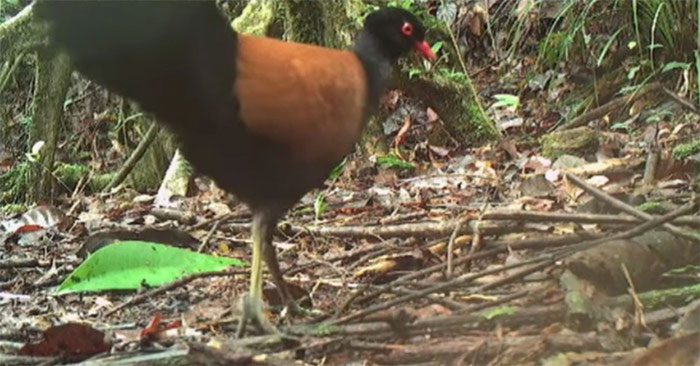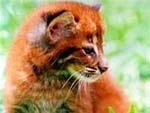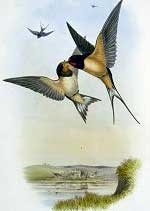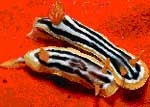An expedition to Papua New Guinea has captured the first photos and videos of the black-crowned pigeon after 140 years of “disappearance.”
In a world where we constantly hear about extinction and endangered species, it is heartening to know that animals thought to be long lost sometimes reappear.
Take, for example, the black-crowned pigeon, first described in the late 19th century and not seen for over 140 years. However, a team of bird researchers recently recorded footage of this bird on Fergusson Island, a rugged island in the D’Entrecasteaux archipelago off the eastern coast of Papua New Guinea.
The images and videos captured by the researchers are the first scientific documentation of this species since 1882. Ornithologists know very little about this bird, but they believe that the population on Fergusson Island is small and declining.
The research team managed to photograph the rare bird using remote camera traps at the end of a month-long search on Fergusson.

This is the first scientific record of the bird since 1882.
The black-crowned pigeon, also known as the crowned pigeon (Otidiphaps nobilis), is a large terrestrial pigeon. Crowned pigeons are found in the pristine tropical forests of New Guinea and nearby islands. They primarily inhabit hilly areas but can also be found in lowland regions.
Jordan Boersma, a postdoctoral researcher at Cornell University and co-leader of the expedition, stated: “When we collected the camera trap images, I realized there was less than a one percent chance of getting a photo of the black-crowned pigeon. Then, when I was reviewing the photos, I was stunned by the image of this bird crossing our camera.”
John C. Mittermeier, director of the Lost Birds program at ABC and co-leader of the expedition, added: “After a month of searching, seeing the first images of the black-crowned pigeon felt like a miracle. It was the moment you dream of your whole life as a conservationist and birdwatcher.”
The expedition team arrived in Fergusson in early September 2022 and spent a month circling the island, interviewing local communities to identify potential camera trap sites in hopes of finding the black-crowned pigeon. The search process proved extremely challenging due to the steep mountainous terrain of Fergusson Island.
Jason Gregg, a conservation biologist and co-leader of the expedition, said: “It wasn’t until we reached villages on the western slopes of Mt. Kilkerran that we began meeting hunters who had seen and heard this bird.”
A local hunter provided a clue about where to find the rare bird. He told the team that he had seen the black-crowned pigeon several times in an area with steep mountains and valleys. He also described hearing the distinctive call of this bird.

Images of the black-crowned pigeon captured.
Following the hunter’s advice, the team set up camera traps at the designated site where they found them in dense forest. As part of their research, this was the first time camera traps were deployed on Fergusson Island. One camera placed on a mountainside at an elevation of 3,200 feet (1,000 meters) near the Kwama River ultimately captured images of the black-crowned pigeon walking on the forest floor.
Doka Nason, a member of the camera trap setup team, remarked: “When we found the black-crowned pigeon, it was in the final hours of the expedition. When I saw the photos, I was incredibly excited.”
The researchers’ findings indicate that the black-crowned pigeon is extremely rare. The rugged and inaccessible forest where they rediscovered this species may be its last stronghold on the island, as its habitat is diminishing.
According to Gregg, a researcher in the team, logging by foreign corporations poses an increasing threat to the birds living in the forest. Additionally, feral cats may kill the crowned pigeons, as they often do with other birds on the island.
Australian scientists note that birds of small to medium size, ground-nesting and foraging species, and those living on remote islands or arid lands are the most at risk. Every day, millions of birds in this country are killed by feral cats.
Maintaining long-extinct bird species requires thorough understanding of their behavior and population status, as well as implementing conservation projects to protect their habitats. Local communities must be at the forefront of conservation efforts.
“It is a part of their history and culture. If we lose this bird, the cultural significance and its role in the ecosystem will also be lost. Not just in Fergusson, but anywhere in the world, the conservation of rare species entirely depends on the local communities living there,” Boersma stated.
The discovery of the black-crowned pigeon has renewed researchers’ hopes of continuing to find other bird species that have not been seen for decades, existing all around the world.
|
The black-crowned pigeon resembles a crowned pigeon in external morphology, particularly with its tail fanning out to the sides and rounded wings. They have glossy black heads, underbellies, backs, and lower backs, with short rounded brown wings and a nape that can be white, green, gray, or black depending on the subspecies. No crowned pigeon species is found in New Guinea, and the black-crowned pigeon has filled the ecological niche of these species. It is a very rare species, feeding on seeds and fallen fruit. This bird typically nests on the ground beneath tree canopies and shrubs. They usually lay a single egg and incubate it for about four weeks. Both male and female pigeons incubate the egg and care for the chick. This species is believed to be declining due to deforestation, which is shrinking their habitat. The black-crowned pigeon has long been known to science only from a type specimen collected in 1882, but it was rediscovered on Fergusson Island in late 2022. |





















































